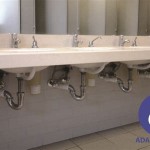Portable Bathrooms with Sinks: Hygiene and Convenience on the Go
Portable bathrooms with sinks represent a significant advancement in sanitation solutions for a myriad of temporary and mobile locations. These units offer a crucial combination of waste management and handwashing facilities, addressing hygiene concerns in settings where traditional plumbing is unavailable or impractical. Their functionality extends beyond mere convenience, playing a vital role in preventing the spread of germs and ensuring a healthier environment in various outdoor and temporary settings.
The design and construction of portable bathrooms with sinks often incorporate durable, lightweight materials such as polyethylene, making them easy to transport and set up. Various features contribute to their effectiveness, encompassing waste containment, water supply, and user-friendly operation. These units are increasingly recognized as essential amenities at construction sites, outdoor events, agricultural settings, and disaster relief zones, providing a necessary level of sanitation that supports public health and worker well-being.
The integration of a sink directly into a portable bathroom offers immediate access to handwashing facilities after using the toilet. This proximity is crucial for promoting hygiene and preventing the transmission of bacteria and viruses. The presence of a sink also encourages more frequent handwashing, a key factor in reducing the spread of illness, especially in locations where large numbers of people congregate or work in close proximity.
Key Point 1: Applications and Benefits Across Diverse Sectors
Portable bathrooms with sinks find widespread use across diverse sectors, providing essential sanitation and hygiene solutions. In construction, these units offer a convenient and readily available facility for workers on-site, improving sanitation standards and boosting morale. Without portable bathrooms, workers might resort to less hygienic practices, potentially leading to illness and reduced productivity. The availability of a sink encourages workers to wash their hands regularly, helping to maintain a healthier and more productive workforce.
Outdoor events, such as festivals, concerts, and sporting competitions, also greatly benefit from portable bathrooms with sinks. These events often attract large crowds, making proper sanitation crucial for preventing the spread of disease. Portable bathrooms with sinks contribute to a cleaner and more enjoyable experience for attendees, while also minimizing the impact on the environment. Event organizers can strategically place these units throughout the venue to ensure easy access and promote responsible hygiene practices.
Agricultural settings, particularly during harvest season, often require temporary sanitation solutions for field workers. Portable bathrooms with sinks provide a clean and convenient alternative to unsanitary conditions, protecting workers' health and promoting food safety. By providing handwashing facilities, these units help prevent the contamination of crops and ensure that produce reaches consumers in a safe and hygienic condition.
In disaster relief scenarios, portable bathrooms with sinks are essential for maintaining sanitation in areas affected by natural disasters or other emergencies. These units provide crucial facilities for displaced populations and relief workers, helping to prevent the outbreak of disease and maintain basic hygiene standards. The self-contained nature of these units makes them ideal for deployment in areas where infrastructure is damaged or non-existent.
Furthermore, portable bathrooms with sinks are used in temporary work camps, film production sets, and remote outdoor recreation areas. Anywhere that plumbing infrastructure is lacking, but human sanitation needs persist, these portable units provide a practical and hygienic solution.
Key Point 2: Design and Functionality of Portable Sinks
The functionality of a portable bathroom with a sink relies heavily on the design and features of the integrated sink system. Understanding these elements is crucial for selecting the right unit and ensuring optimal performance.
Water supply is a primary consideration. Many portable sinks utilize a self-contained water tank, eliminating the need for a direct water connection. These tanks range in size, from a few gallons to over twenty, depending on the intended use and frequency of replenishment. The tank should be easily accessible for refilling and constructed from durable, food-grade materials to ensure water safety.
Pumps are employed to deliver water from the tank to the faucet. Foot-operated pumps are a common option in portable bathrooms, as they offer a hands-free operation, reducing the risk of cross-contamination. Electric pumps are also available, providing a more consistent and convenient water flow. The pump's reliability and ease of maintenance are crucial factors to consider.
Waste water management is another critical aspect. Portable sinks typically include a separate waste water tank to collect the used water. The capacity of this tank should be adequate for the expected usage and should be emptied regularly to prevent overflow and maintain hygiene. Some models incorporate a drain plug or hose connection for easy emptying.
The sink basins themselves are usually made of durable, non-porous materials such as stainless steel or plastic. The design should facilitate easy cleaning and drainage. Some models feature splash guards to prevent water from splashing outside the sink area.
Soap and paper towel dispensers are often integrated into the sink unit to provide a complete handwashing solution. These dispensers should be easily accessible and refillable. The choice of soap is also important; antibacterial soaps are often preferred in portable bathrooms to further reduce the spread of germs.
Increasingly, portable sinks are incorporating features like hot water heaters to provide a more comfortable handwashing experience. These systems usually rely on a small electric heater to warm the water, adding a degree of luxury and encouraging more thorough handwashing, particularly in colder climates.
Key Point 3: Maintenance and Hygiene Standards
Maintaining hygiene standards in portable bathrooms with sinks is paramount to ensuring their effectiveness in preventing the spread of disease. Regular cleaning and maintenance are essential for keeping the units in optimal condition and promoting a healthy environment.
Cleaning schedules should be established based on the frequency of use. High-traffic locations may require daily cleaning, while less frequently used units can be cleaned less often. A thorough cleaning should involve disinfecting all surfaces, including the toilet seat, walls, floor, and sink. Using appropriate cleaning agents is crucial for killing germs and removing stains.
The waste tank should be emptied regularly to prevent overflow and odor. The frequency of emptying depends on the tank's capacity and the usage rate. Properly disposing of the waste is essential to avoid environmental contamination. Following local regulations and guidelines for waste disposal is crucial.
Water tanks should be drained and cleaned periodically to prevent the growth of bacteria and algae. Using a disinfectant solution can help sanitize the tank and ensure that the water remains clean and fresh. Regular inspection of the tanks for leaks or damage is also important.
Soap and paper towel dispensers should be refilled regularly to ensure that users have access to the necessary supplies for handwashing. Providing adequate supplies demonstrates a commitment to hygiene and encourages responsible use of the facilities.
Ventilation is important for minimizing odors and maintaining air quality. Portable bathrooms with sinks often include ventilation systems, such as vents or fans, to promote air circulation. Ensuring that these systems are functioning properly is essential for creating a more pleasant and hygienic environment.
Regular inspections should be conducted to identify any maintenance issues, such as leaks, broken fixtures, or damaged components. Addressing these issues promptly can prevent further damage and ensure that the units remain in good working order. A preventative maintenance program can help extend the lifespan of the portable bathrooms and minimize the need for costly repairs.
Furthermore, providing clear instructions on proper usage and hygiene practices can help users maintain a clean and sanitary environment. Posting signs that promote handwashing and responsible waste disposal can encourage users to follow best practices.

Deluxe Porta Potty With Sink Al National Construction Als

Deluxe Porta Potty With Sink Al National Construction Als

Upgraded Porta Potty With Handwash Sink No Urinal Single Order For King Al

Flushable Portable Restroom Unit Jimmy S Johnnys

Flushable Portable Restroom Moon Restrooms

My Bag Portable Bathroom By Olympia Ceramica Sink Diy

Porta Potty Als Septic Services In Orange County Ny

Standard Portable Toilet W Sink Knight S Pumping And Services

Portable Toilet Washroom Bathroom Hdpe Plastic Mfrs

New Mobile Restroom Toilet Portable Bathroom With Sink
Related Posts







